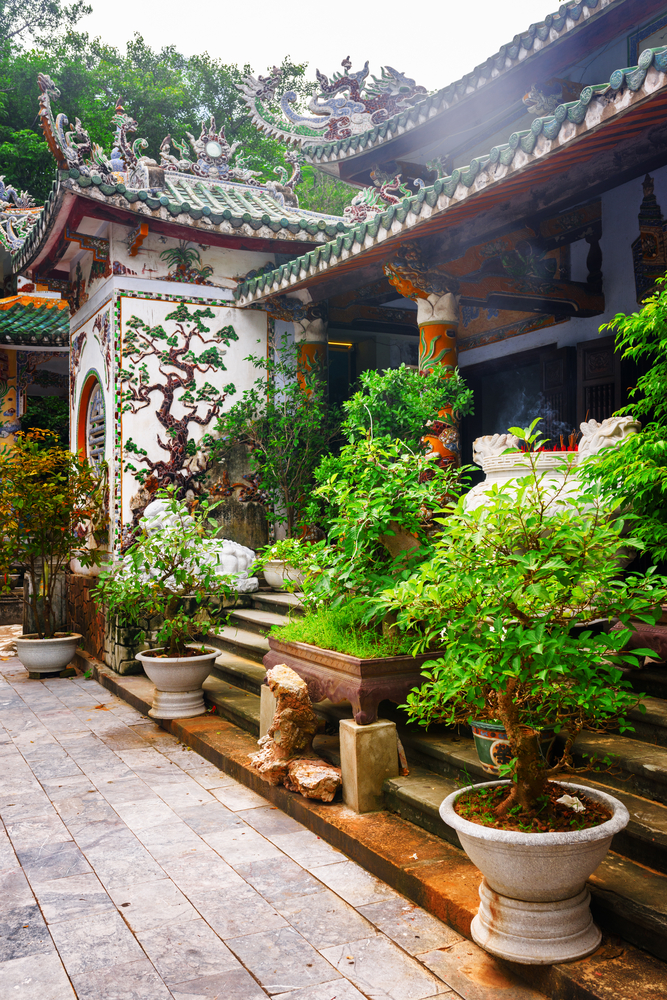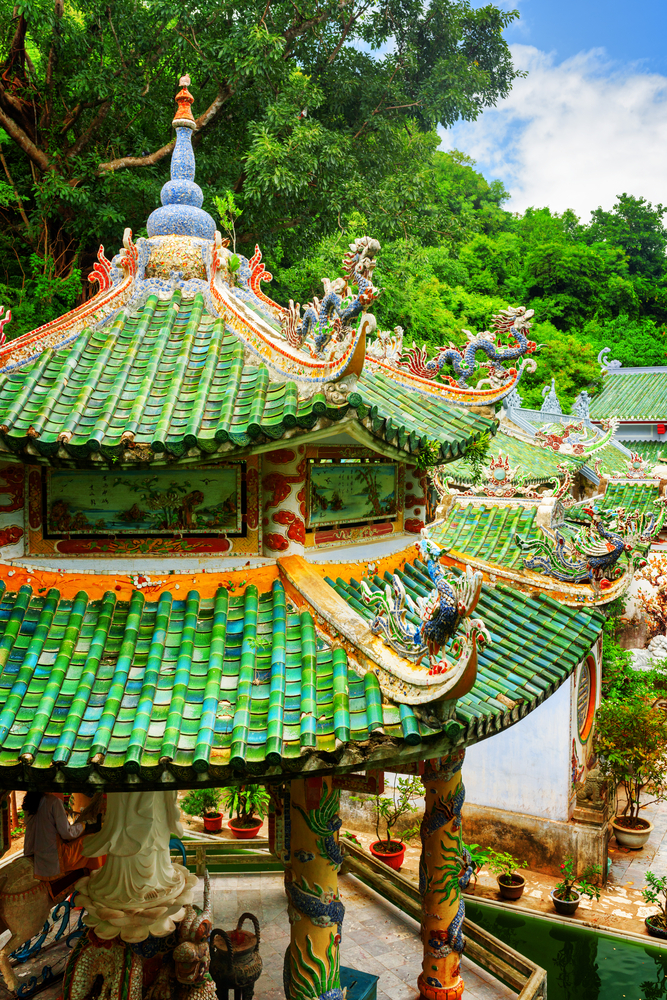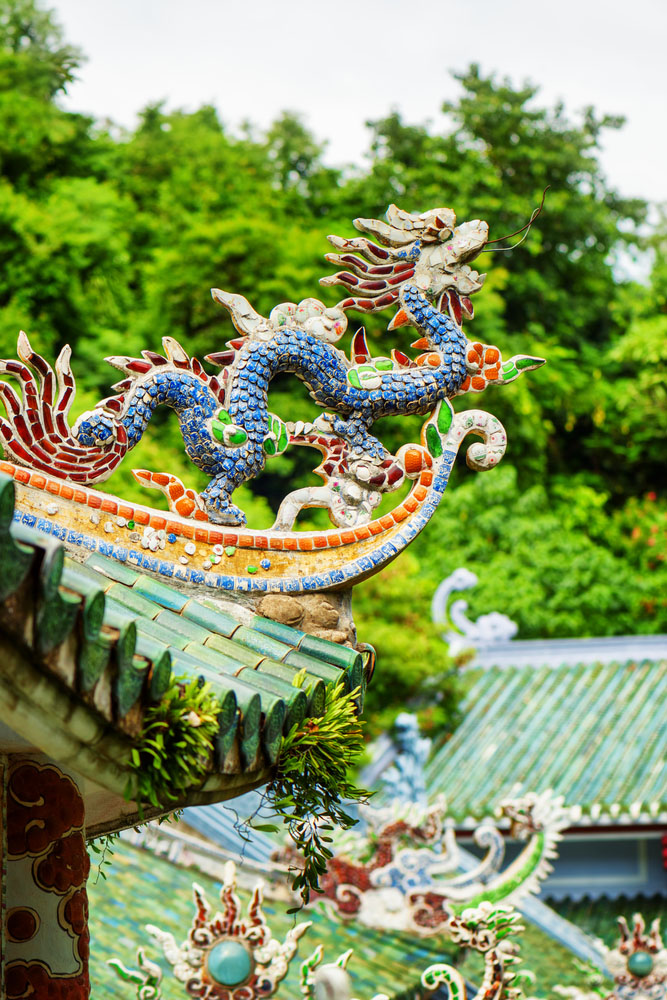THE NGU HANH SON/ MARBLE MOUNTAIN SCENIC SITE
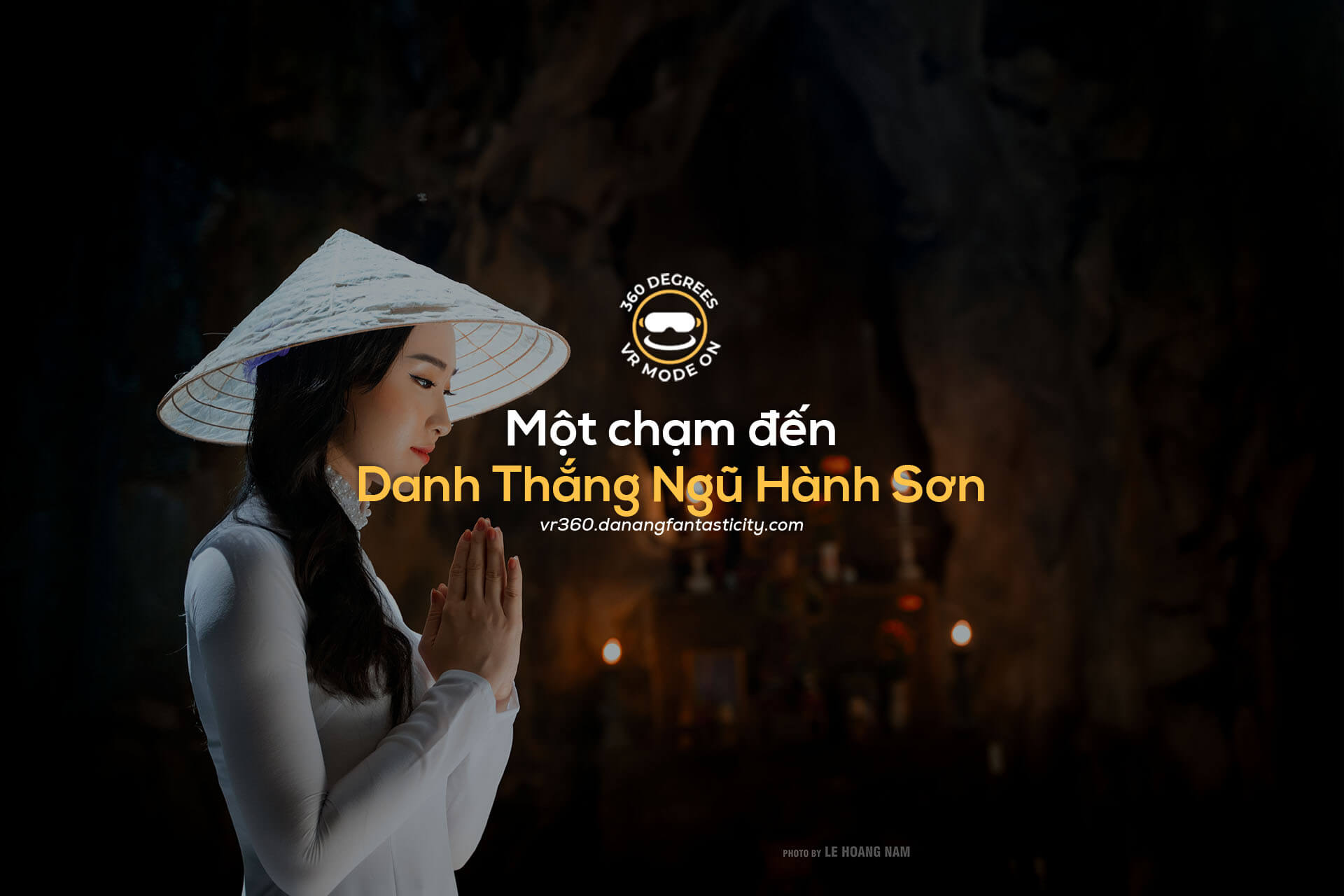
The Ngu Hanh Son/ Marble Mountain scenic site has many attractive view spots, such as Am Phu Cave, Huyen Khong Cave, Linh Ung Pagoda, and Vong Giang Dai.
- Address: 81 Huyen Tran Princess Street, Ngu Hanh Son District, Da Nang City
- Ticket Price:
– Thuy Son Peak:
- Adults: 40.000 VND/person/visit
- Students: 10.000 VND/person/visit
- Children under six years old: Free of charge
Elevator service fee: 15.000 VND/person/one way (round trip 30.000 VND/person)
Guided tour fee: 50.000 VND/group
*Visitors to Thuy Son Peak can purchase tickets at either Gate 1 or Gate 2. An elevator system is available to take visitors up for sightseeing, requiring a separate ticket.
– Am Phu Cave:
- Adults: 20.000 VND/person/visit
- Students: 7.000 VND/person/visit
- Children under six years old: Free of charge
GENERAL INTRODUCTION
Geographical location:
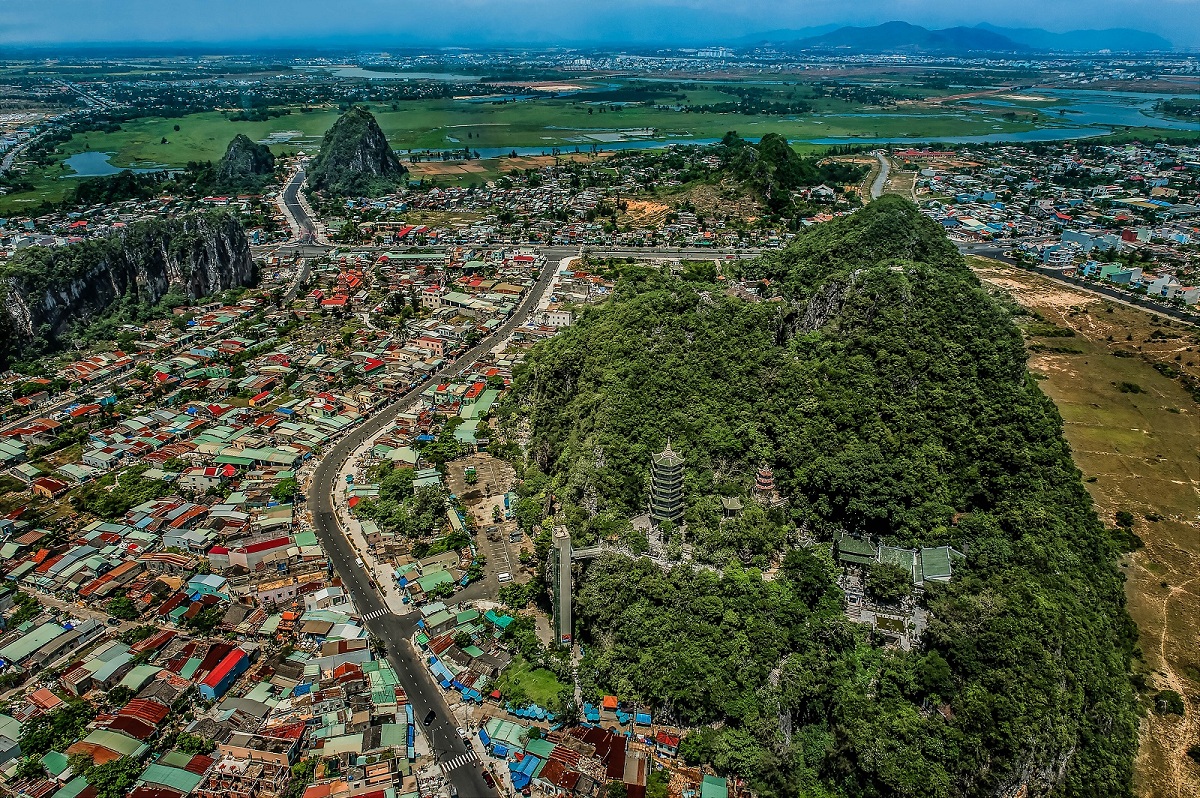
The Ngu Hanh Son Scenic Site, known as the Marble Mountains, is about 8 km southeast of Da Nang city center.
The site holds a prime geographical position as it is a key stop for tourists traveling along the Central Heritage Road, which includes the Hue Ancient Capital, Marble Mountains, Hoi An Ancient Town, and My Son Sanctuary. Surrounded by sea, river, and mountains, the area is ideal for tourism development.
Structure of Pagodas and Caves:
Marble Mountains (called Ngu Hanh Son in Vietnamese) are named after the five elements: Kim (metal), Thuỷ (water), Mộc (wood), Hoả (fire) and Thổ (earth). Ngu Hanh Son is a complex of six mountains: Thuy Son (water), Kim Son (metal), Hoa Son (including Duong Hoa Son and Am Hoa Son – Fire), Tho Son (earth), and Moc Son (wood).
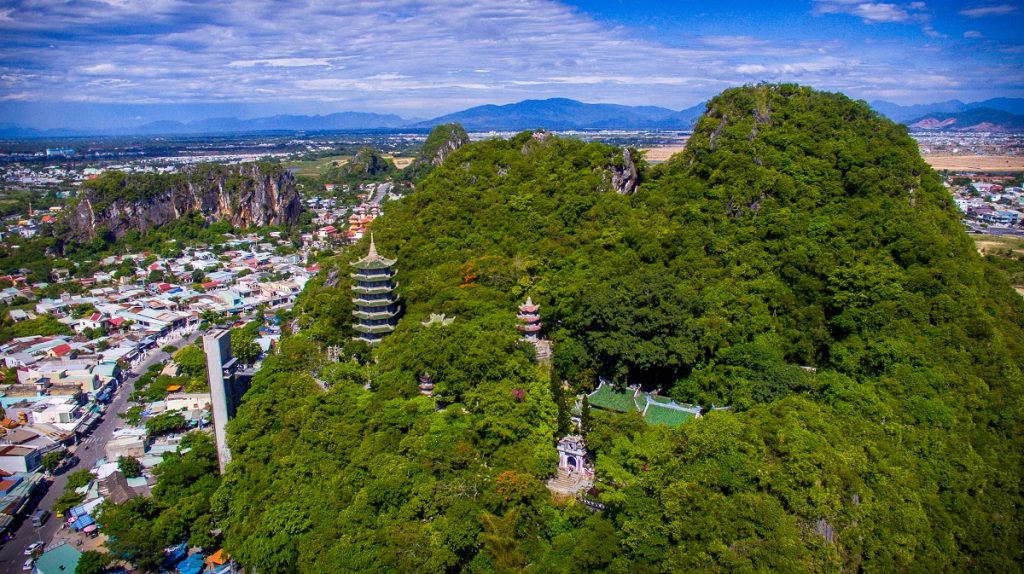
Thuy Son, located in the northeast, is the most beautiful mountain often visited by tourists. It is also known as Non-Nuoc Pagoda. The scenic area covers 15 hectares, featuring ancient pagodas, stalactite caves, and two beautiful pagodas: Tam Thai Pagoda and Linh Ung Pagoda. The path to the mountain is paved with stone steps, and the summit has three peaks named “Tam Thai” because they resemble the “Tam Thai” constellation. Thuy Son consists of 9 caves, five pagodas and towers, Vong Giang Dai, and Vong Hai Dai.
* Cave:
In Huyen Khong Cave is the Thien-Y-A-na Chua Ngoc statue on the altar. In the past, people practiced a unique ritual involving the blood of a rooster to swear honesty in disputes. Many people came to the pagoda to pray for children from the deity. They would then drink water from the stalactites in Huyen Khong Cave (these customs are no longer practiced today).
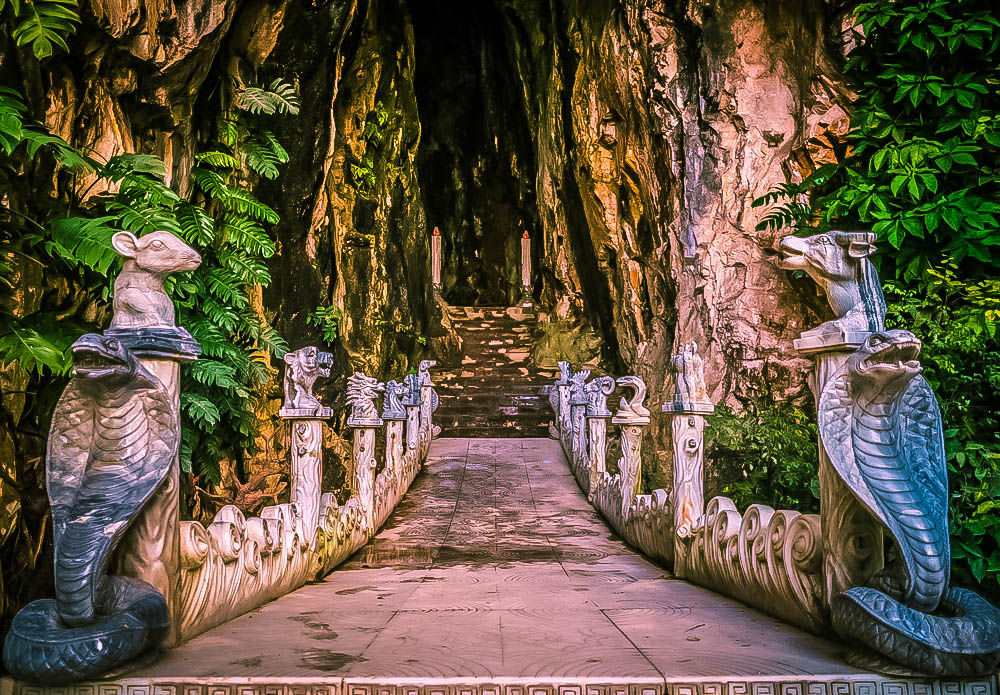
Am Phu Cave, located south of Thuy Son, is known for its lack of sunlight. The deeper you go, the darker it gets, hence the name “Am Phu” (Hell/ Yin Phu Cave). Some believe that marked grapefruits left in the cave will eventually float to sea, suggesting a connection to the ocean.
Other notable caves include:
- Hoa Nghiem Cave
- Linh Nham Cave
- Van Thong Cave (connected to the sky)
- Tang Chon Cave (behind Linh Ung Pagoda, resembling a small valley)
- Thien Long Cave (cave of the dragon and sky)
- Thien Phuoc Dia Cave
- Ngu Coc Cave
Wind Caves:
- East Wind Cave (Van Can Nguyet Quat)
- West Wind Cave (Van Can Nguyet Quat)
*Pagodas:
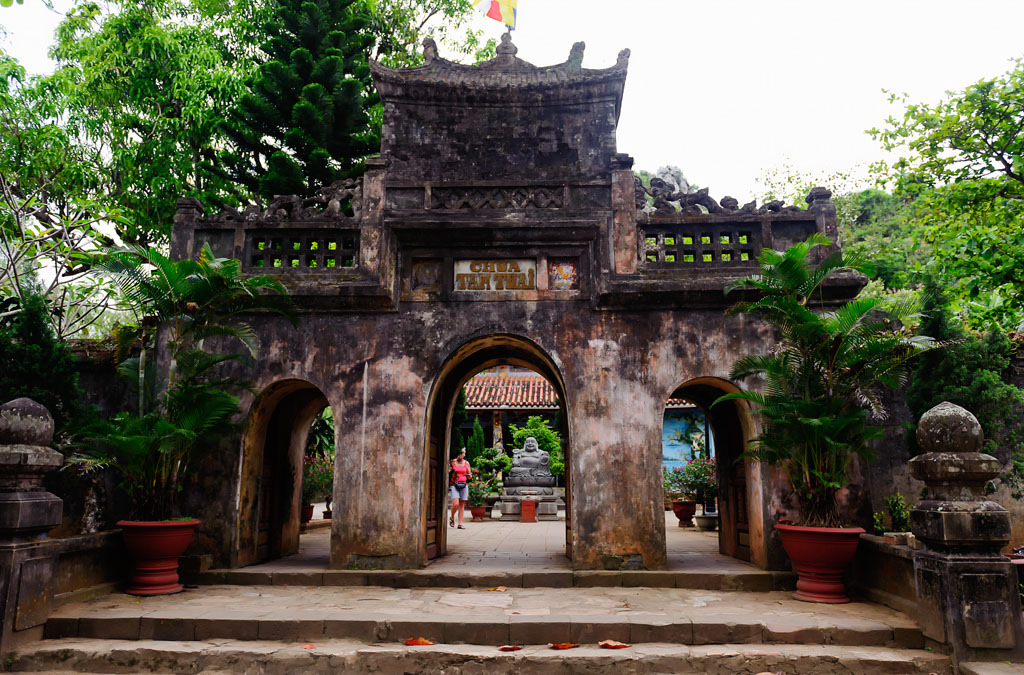
Tam Thai Pagoda, originally built in 1630 and later renovated in 1946 and 1975, features a courtyard with a giant Maitreya Buddha statue, surrounded by bonsai and frangipani trees.

The Tam Thai Pagoda has a history of over 200 years. It was initially built using baked materials, molasses, and sugar lime. In 1907, humans restored the pagoda using solid tiles after a heavy storm damaged it.

Linh Ung Pagoda faces the sea and was initially built during the reign of Emperor Minh Mang in 1825. Originally named Ung Chan Tu, it was later renamed Linh Ung Tu by Emperor Thanh Thai in 1891. The pagoda features a giant statue of Avalokitesvara Bodhisattva, rebuilt in 1970.
Tam Ton Pagoda
Tu Tam Pagoda
*Blessing tower
Kim Son is the most modest mountain, consisting of: Quan The Am Pagoda and Quan Am Cave; Thai Son Pagoda and Tam Thanh Cave
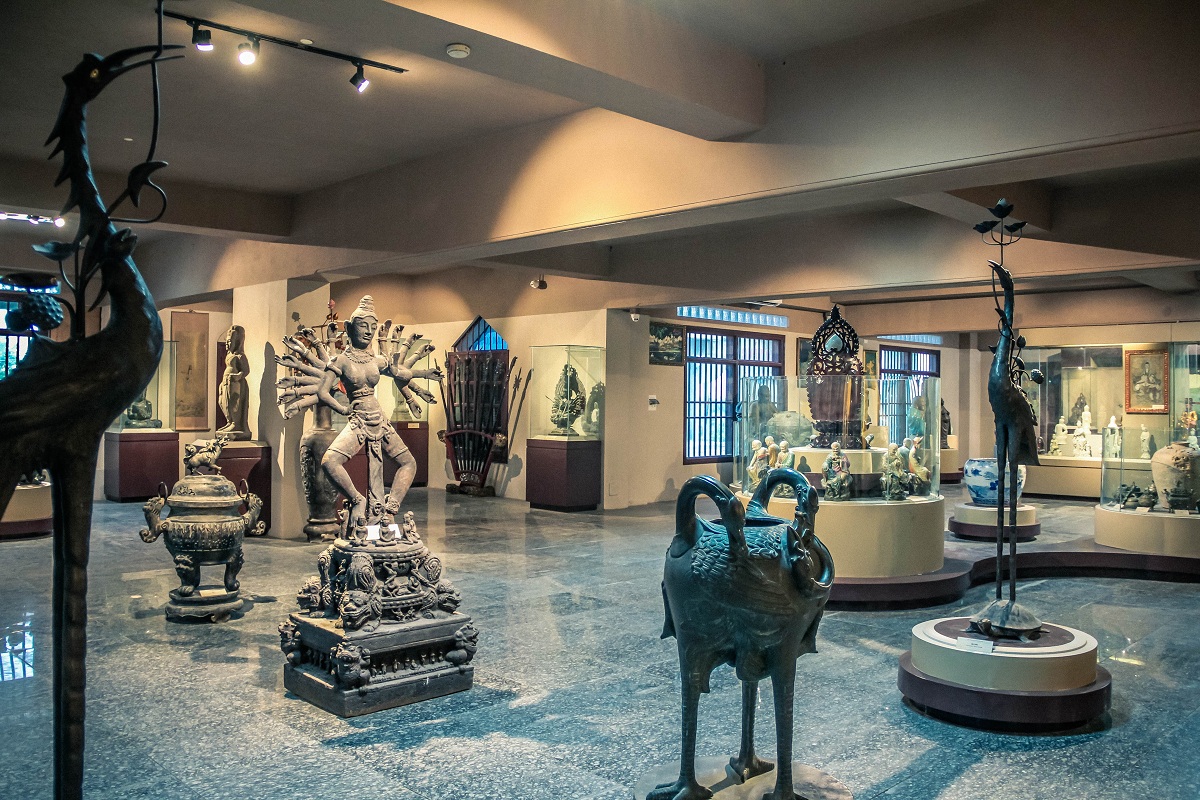
Quan The Am Pagoda is being expanded and includes the first Buddhist Cultural Museum in Vietnam, displaying over 200 artifacts.
Hoa Son is located west of Kim Son and is known for its marble quarries.
The Son is a low mountain with a square shape, containing red clay and sandstone.
Moc Son lies to the southeast, parallel to Thuy Son, with steep, rocky slopes.
THE FORMATION OF THE MARBLE MOUNTAINS
1. Formation and Geological Structure According to Science:
According to geologists, the Marble Mountains were originally small islands in the Biển Đông (Eastern Sea). Over time, they became connected to the mainland due to the formation of the Quang Nam plain, caused by the uplifting of the Truong Son mountain range and the sedimentation from the Thu Bon River and its tributaries. Today, the coastline has receded about 800 meters from the mountains, creating a unique and attractive landscape.
The Marble Mountains display characteristics of Vietnam’s limestone mountains. The tropical climate with heavy rainfall has gradually dissolved the limestone over time, creating mysterious and enchanting landscapes, especially within the caves. The caves in the Marble Mountains are open, with many openings outside, keeping them cool and well-ventilated, unlike the closed caves found in places like Phong Nha, Ha Long Bay, and Lang Son.
2. Festivals and Craft Villages Associated with the Marble Mountains:
In 1956, Venerable Thich Phap Nhan discovered a naturally formed stalactite statue of Quan The Am holding a vase of nectar, as tall as a real person, in a cave on Kim Son Mountain. Surrounding the statue were various depictions of Bodhisattva Quan The Am, including virtuous boys and girls and other mythical figures.
Based on this discovery, in 1962, Venerable Thich Phap Nhan organized a festival on the 19th of the second lunar month to celebrate the inauguration of a newly built pagoda. This became the annual Quan The Am festival.
In 1991, as traditional festivals were being revived nationwide, and with the UNESCO-led Decade for Cultural Development initiative, the Quang Nam – Da Nang (as Da Nang and Quang Nam now) provincial authorities and the Buddhist association allowed Venerable Thich Hue Huong of Quan The Am Pagoda to formally establish the “Quan The Am – Marble Mountains – Non-Nuoc” festival. It is held annually for three days from the 17th to the 19th of the second lunar month.
Since then, the festival has been held regularly every spring. In late 1999, it was recognized as one of the 15 national folk festivals.
The Quan The Am festival features both ceremonial and celebratory aspects. The ceremonies are conducted in solemn Buddhist rituals, and the festival spans three days with cultural, sports, and recreational activities. It attracts many devotees, locals, and tourists from both inside and outside the country.
NON NUOC – MARBLE CARVING VILLAGE
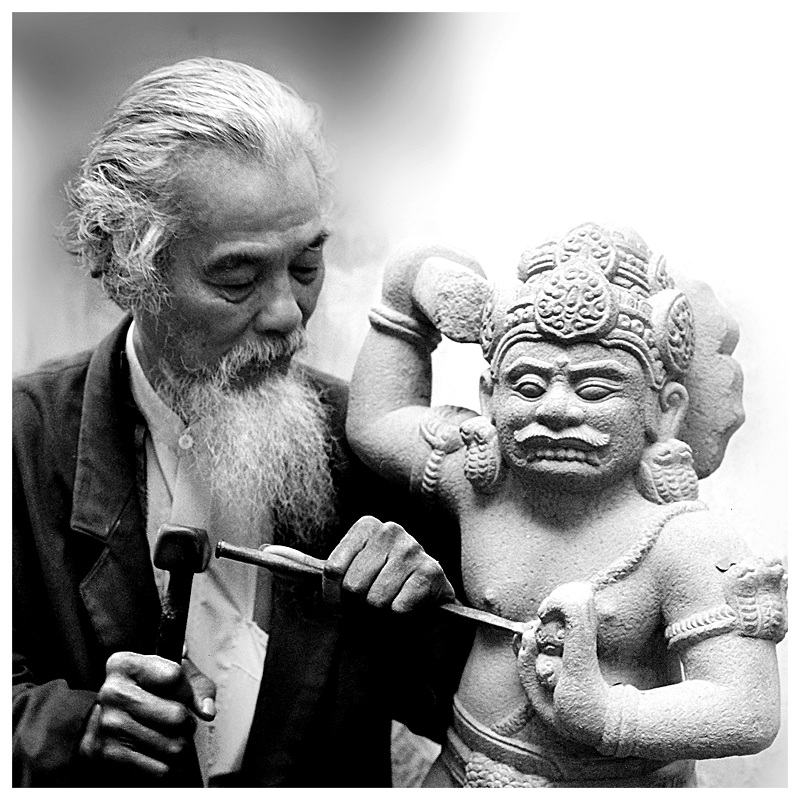
The Non Nuoc – Marble carving village stretches along the foot of the Marble Mountains. It is a craft village with an unclear formation date, but it is mentioned on a stele at Pho Khanh Pagoda in Ai Nghia village, one of the oldest pagodas in “Quảng” land, now located in Dai Hoa commune, Dai Loc district, Quang Nam province. The stele was inscribed in the year of Mau Ngo (year of the horse), the third year of the Vinh Tri era, stating, “Under the reign of Le Hy Tong (1678), it is recorded that the artisans carving the stele hailed from Quan Khai commune” (the old Quan Khai commune is now part of Hoa Quy ward, Ngu Hanh Sơn district).
Based on this stele, it can be seen that Quan Khai commune had the craft of stone carving and engraving characters from at least the 17th century. According to the stele, the stone carvers came from Thanh Hoa and settled in Quan Khai commune, as at that time, there was no population or villages around the base of the Marble Mountains. The founding ancestor of the marble carving craft was Huynh Ba Quat, who introduced the stone carving craft from Thanh Hoa to the land of Ngu Hanh Son – Marble Mountains.
As the stone carving village and its products became rare and valuable gifts for tourists, many artisans gradually moved to the foot of the Marble mountain range in Hoa Hai ward. Currently, at the base of the mountain range in Dong Hai block, Hoa Hai ward, there is the “Thạch Nghệ Tổ Sư” church, commemorating the ancestors on the lunar 6th day of the first month every year.
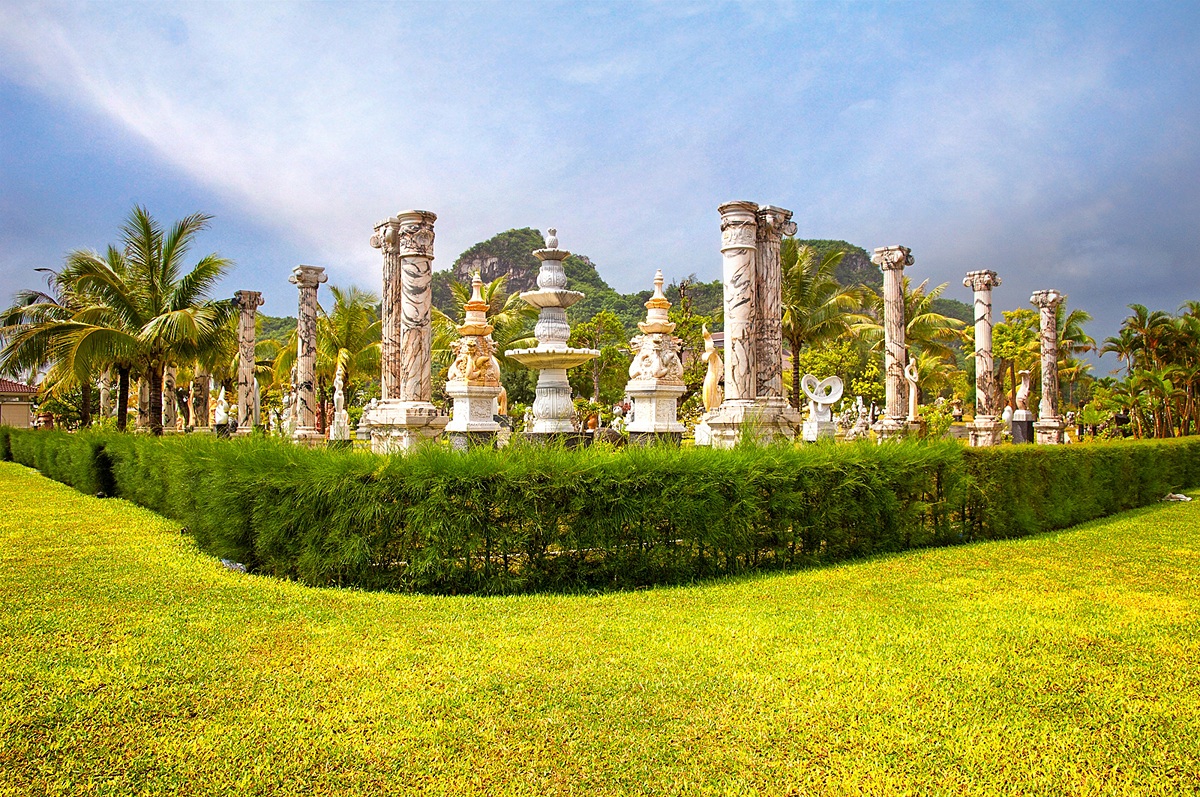
Establishments and hundreds of stone carving artisans, with respectful offerings and burning incense, express their gratitude to the predecessors who pioneered and developed the craft until today. The Marble stone carving village was recognized as a national intangible cultural heritage in 2014.
Today, many unique and exquisite art products from the Non Nuoc – Marble carving village have been exported to markets worldwide.
DANANG CENTER FOR TOURISM PROMOTION
